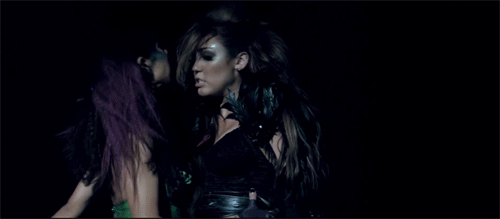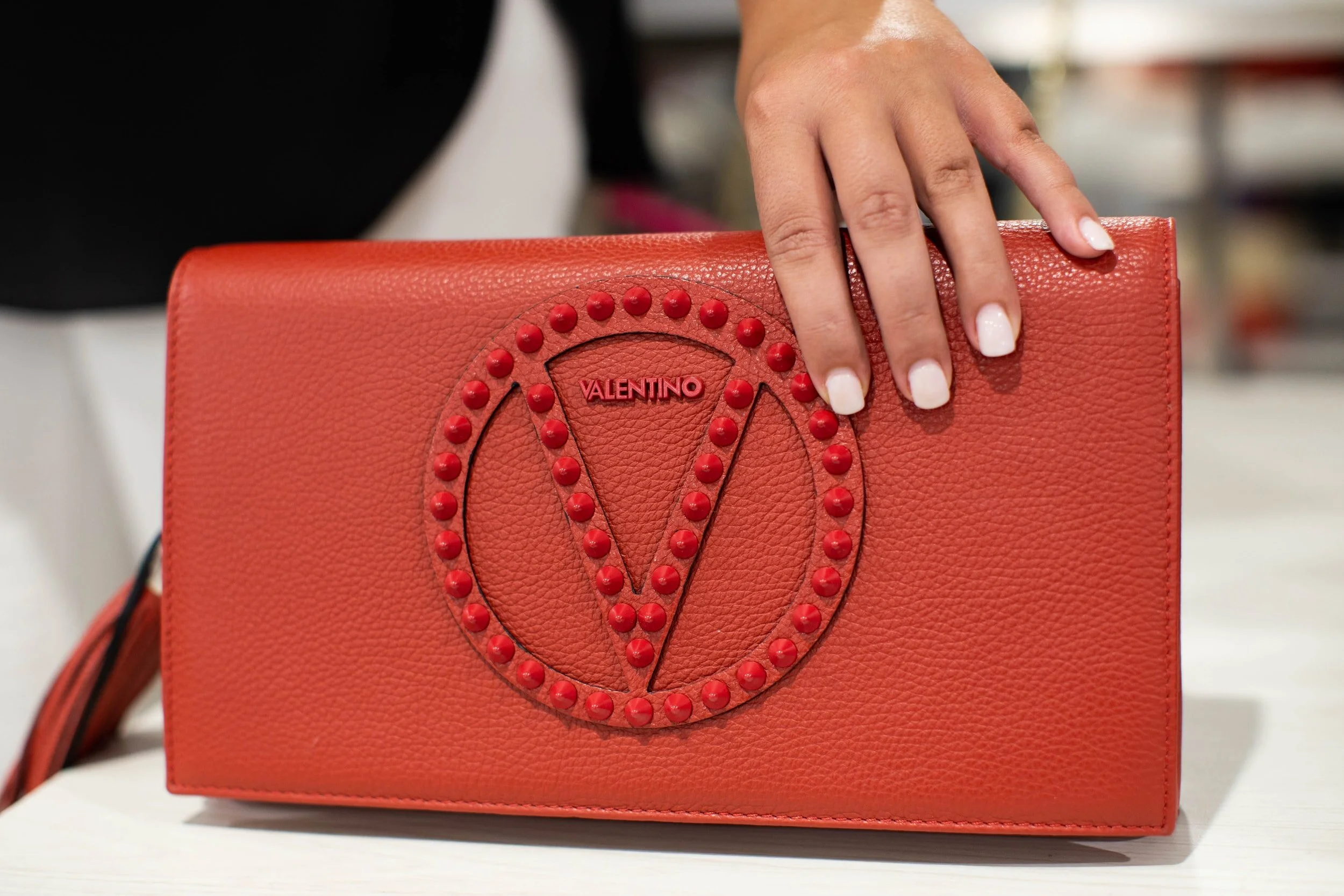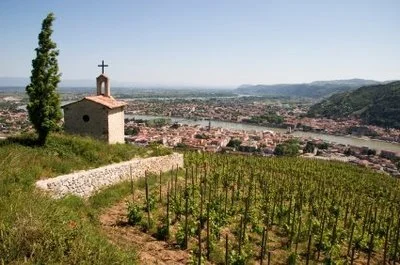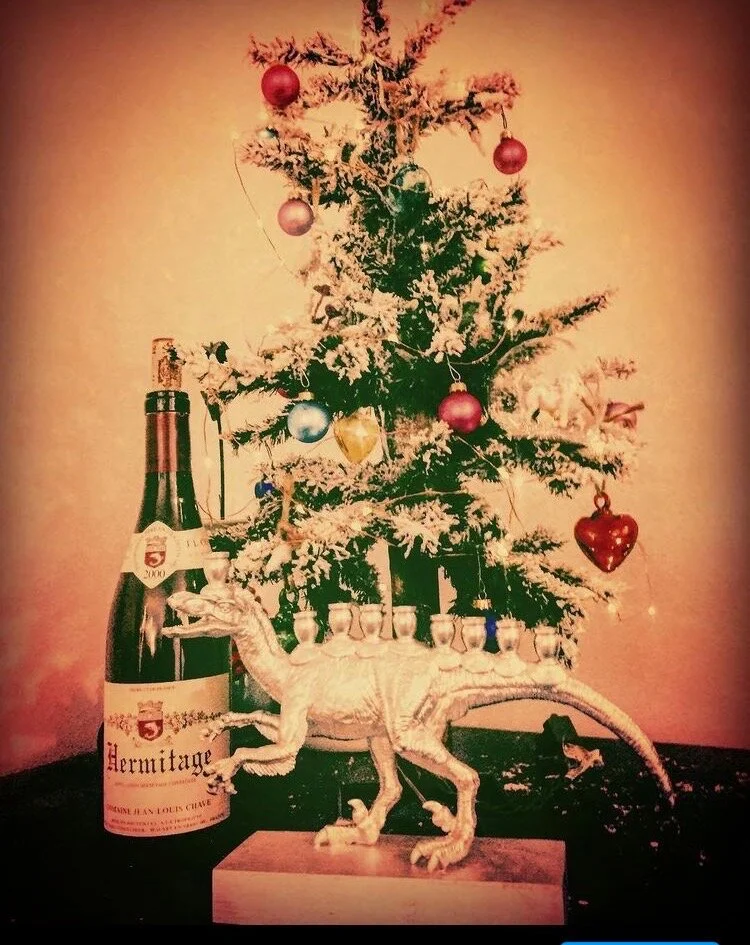THURSTQUEEN WORLD TOUR: THE NORTHERN RHÔNE.
The vines of M. Chapoutier - one of the top dog producers in the Northern Rhône.
I am seriously in love with wines from the Northern Rhône.
If you love powerful as all f**k red and white wines, the Rhône Valley is going to be your SHIT.
Beyonce casually on her way to drink some Hermitage.
Rhône wines were the first, “major” wines I sold back in the day. When I was working the streets, heavy on my hustle, I slung a lot of ‘em. Especially Châteauneuf de Pape - that’s from the Southern portion of the Rhône, by the way.
I was going to devote one blog post to the entire Rhône Valley, but I realized that was just WAYYYYYY too much to cover, so I’ve broken it down into two posts — The Northern Rhône and the Southern Rhône.
Today, we are going to be discussing wines from the Northern Rhône
Wines from Northern Rhône are unbelievable. If you’re a Syrah lover, the Northern Rhône is going to be your favorite region. The wines that come out of this place are second to none in terms of intensity, power, and depth.
The Northern Rhône only produces roughly 5% of all the wines from the Rhône Valley. It’s significantly smaller than its southern sister, but what it lacks in size it makes up for in intensity and prestige.
At this point in my life, I didn’t have a lot of money for groceries so I’d be eating English muffins or pasta and pairing them with the remnants of some crazy Côte Rotie that I would never be able to afford.
There was a certain, “wildness,” these wines had. Whether they were a white Viognier or an inky, dark, sexy as all f**k Syrah from Saint-Joseph — like Miley Cyrus in her pre “Wrecking Ball,” days… Northern Rhône wines just can’t be tamed.
THE MAJOR GRAPES OF THE NORTHERN RHÔNE
SYRAH (RED)
The biggest, baddest, motha f***in’ grape of ‘em all. Syrah is the king of the Rhône — especially in the North. It’s the freaking John Snow of this region. Northern Rhône Syrahs have this intensity and elegance to them that you can’t touch.
If you love Syrah — especially the darkest, most brooding, “Kurt Cobain-iest” of Syrahs that burst fourth with blackberries, smoke, bacon, eucalyptus, and the darkest chocolate you’ll probably be obsessed with the Northern Rhône. These wines don’t freakin play. They’re not as warm and friendly as some of the wines we will talk about in the Southern Rhône. No — instead, they’re formidable and regal. Like Jeremy Irons and James Earl Jones, these wines are serious af.
VIOGNIER (WHITE)
This complex, outrageously perfumed, stunner of a grape is absolutely astonishing over in the Rhône. To all my Chardonnay lovers out there — especially the ones who love those oaked, creamy, complicated ones — Viognier definitely needs to be on your list in terms of grapes to try.
If you love honeysuckle, roses, and peaches — do yourself a favor and pick up some Viognier whenever you get the chance. I really enjoy Viognier because I am super into perfumes. I love white florals, and aromas of roses, so naturally Viognier is totally right up my alley.
If you’re like me, and always sticking your nose in some sort of floral scented candle, spraying rose and lily perfume on your wrist — Viognier is your grape. This grape is completely over-the-top ravishing, and in terms of texture is almost oily (but not in an off-putting way.)
It’s a higher alcohol grape too - hooray! - and has enough of a backbone to stand up to some seriously hearty dishes. So if you’re into white wines, but like to have a white wine with a serious presence and says, “Look at me!” Viognier is definitely the next white grape you need to be trying.
MARSANNE (WHITE) & ROUSANNE (WHITE)
I put these two grapes together, because they’re freaking inseparable.
These grapes are typically used as blending grapes in the Rhône, and when I see them in a wine it’s usually this scenario: Grenache Blanc & Viognier are the stars and Marsanne/Rousanne are the supporting grapes. Sometimes, I see white blends where it’s Marsanne and Rousanne together. In Northern Rhône, these grapes are often found in White Hermitage. Interestingly enough, Marsanne is actually the most widely planted white wine grape in the Rhône.
With all that in mind, Marsanne is not allowed in the Châteauneuf de Pape AOC in the Southern Rhône — only Rousanne has that privilege. So… it’s kinda awkward for the two of them.
Wines that are Marsanne/Rousanne blends are fairly high in alcohol, pretty low in acid, and medium bodied. They’re super fruity, and I always get beeswax when I have these wines. If you’re the type of person who loves apricots and ripe mandarin oranges — you should give Marsanne/Rousanne blends a shot.
These blends are great alternatives to Chardonnay because they have a similar texture and are a weightier white wine.
THE GEOGRAPHY OF THE NORTHERN RHÔNE WINE REGION
If you’ve been following this blog for a while, you’ve probably learned that a lot of wine regions, or AOC, tend to exist somewhere near a body of water. That’s because the body of water usually has a moderating effect on the climate. This makes the weather just a little bit easier for the grapes to handle. The Rhône is no different. What is that body of water called, you ask? It’s the Rhône River, duh.
The Northern Rhône tends to have a cooler climate than its friendlier and warmer Southern sibling. There’s quite a bit of rain here, and the climate is Mediterranean. Here there are very steeply sloping hillsides — otherwise known as côtes. The vines in this regions grow almost terrace-like on these hillsides.
Temperatures in Hermitage and Cornas are slightly warmer than the rest of the Northern Rhône regions - like Côte Rotie - and this cool climate definitely affects the character of the grapes grown here.
It’s pretty windy in the Northern Rhône as well, and the winds that blow through here are called La Bise. These winds are important because they keep the vines clean and protect them from diseases. In the North, the wind usually follows the rains this region receives, so the wind is able to remove the excess moisture from the vines so they don’t get moldy - like a blowdryer.
Can I get a HAAAAYYY from the Syrah fans in the house?
The Northern Rhône is a Syrah lover’s paradise. Some of the most darkly elegant, powerful, profound Syrahs in the entire world come from the Northern Rhône. I’ll be honest — wines from the Northern Rhône are pretty expensive — and you’ll be hard pressed to find a $30.00 and under Hermitage (but if you do, TELL ME about this sorcery!)
Regardless, these are important appellations worth knowing about.
NORTHERN RHÔNE WINE APPELLATIONS TO KNOW…
CÔTE RÔTIE - VERY FANCY SCHMANCY REDS
Some of these regions are going to require you to fork out a little more dough than others.
The Côte Rôtie is one of them. I dig Côte Rôtie, and when I was hawking my Rhône wares, I loved bringing one around because it always meant at the end of the day, I’d get to have a glass of my own.
In the Côte Rôtie - a term that translates to, “roasted slope,” - you’ll find a lot of Syrah and some Viognier. And interestingly enough, the Côte Rôtie is the one appellation where the Syrahs can be blended with Viognier.
For you red wine drinkers out there — definitely pay attention to this region. The Syrahs that come out of this region are very perfumey with aromas of bacon fat as well. It’s an outrageously heady combination, and these wines are… well… they’re just damn sexy, that’s what they are.
I won’t elaborate too much on it, because the majority of the offerings from the Côte Rôtie are out of the Thurstqueen price range, but if you’re looking for some of the most prestigious expressions of Syrah and have money to buy some — I highly recommend this region.
CONDRIEU - VERY FANCY SCHMANCY WHITES
To all my white wine lovers — the people who read this blog and are obsessed with those oaky, creamy, Cali Chardonnays. If reading about Viognier and spraying rose petal perfume on your wrists and sniffing scented candles resonated with you — check it: Condrieu is the appellation for you!
Condrieu is the largest white wine appellation in the Northern Rhône. If you’re obsessed with Viognier — I mean, it’s a gorgeous expression of white wine, I can’t blame you — then you’ve gotta check out wines from Condrieu! These wines are sexy, rich, and opulent. Opulent? You ask? How could a wine be, “opulent?” That means these wines are rich, smooth, and super BOLD.
If you want to geek out about soil types — the soil in this region is mostly clay and decomposed granite soil. This causes plump (they literally feel very round in your mouth), lower-acid wines that you should really enjoy when they’re young.
SAINT-JOSEPH - THE “OFF-FIFTH” OF THE RHÔNE
I remember tasting a wine from this appellation when I was a server at a wine bar back in the day. It blew my mind.
If you’re into inky, powerful Syrah but don’t want to break the bank — Saint-Jo is definitely an appellation you should consider looking into during your wine travels.
You can find some absolutely killer bargain wines that come from this region. If you’re really into flavors of black pepper, black olives that have good acid, look no further. Saint-Joseph also produces some beautiful Marsanne/Rousanne blends as well.
The soils in this part of the Rhône have mixtures of clay and limestone — yet there’s still some granite. The wines here are fresh, with a more attractive mineral quality to them. You can really find some impressive gems from this appellation — making it very worth the buy.
CROZES-HERMITAGE - THE RHÔNE VERSION OF CANAL STREET
So you like designer handbags but don’t want to cough up the dough and happen to live somewhere like New York. What do you do? If you’re in New York, you hit up a place like Canal Street, right?
If you’re a fan of Hermitage - or what I like to call, the Big H - but don’t want to spend the money on it, what appellation should you consider buying your next bold Syrah from? Consider Crozes-Hermitage.
Crozes-Hermitage is the largest region in the Northern Rhône. Many times it’s often confused with Hermitage — don’t get it twisted, it’s not. There are some absolutely beautiful Syrah and Marsanne/Rousanne blends over here that are a great value.
Crozez-Hermitage likes to blend some of its white wine - Viognier - with Syrah to add an elegant quality to the wine. This wine has often been overshadowed by its big sister, Hermitage, but lately the wines from Crozes-Hermitage have been increasing in quality throughout the years.
HERMITAGE - THE RODEO DRIVE OF THE RHÔNE
Hermitage is basically the jewel of the Northern Rhône. I don’t get starstruck by wine regions very easily, but with this region? I’m sorry, I’m a total fangirl.
Me when I get to taste Hermitage
This appellation is TINY - coming in at only 345 acres of vineyards. Hermitage is known for producing some of the most expressive - and expensive - Syrah in the world. A small amount of Marsanne/Roussanne is produced here as well, known as White Hermitage.
@thedrinksbusiness
This appellation is simply gorgeous - with a tiny chapel hidden amongst the vineyards on steeply sloping côtes . Wines from Hermitage can age up to 40 years in some cases, and are known as the longest lived Rhône wines in the entire valley.
It is one of the oldest wine regions in the entire world, and the ancient Greeks were planting vines here as far back as 600 BCE. The region received its name when a knight named Henri Gaspard de Sterimberg decided to retire and start making wine in this isolated, hilly area. He became a hermit, chilling out in the vine covered hills of Hermitage and decided to live out the rest of his days amongst the Syrah vines. (Honestly, this does not seem like a bad way to spend one’s retirement.)
I’ve been lucky enough to have a bottle of 2008 Jean Louis Chave Hermitage and I have to say it was one of the most memorable wines I’ve ever experienced. I don’t know if I’ll ever be privileged enough to get to have some again — but I know I’ll always remember it.
I enjoyed that wine so much, I kept the bottle. It would always have a special place of honor and sit right by my Christmas Tree and velociraptor menorah during the holidays - because yes, I am that obsessed with Hermitage.
I am that much of a fan.
CORNAS - A MIXTURE OF FANCY SCHMANCY & BARGAIN WINES
Do you enjoy big af, meaty, red wines that are more powerful than the Incredible Hulk?
CORNAS!!!
Well, look no further than Cornas. Cornas is a region in the Northern Rhône that produces exclusively Red Wines. That’s right, no white wines allowed!
The wines that come out of Cornas are tannic, dark, and super robust. This is largely because the majority of the vineyards sit on granite soils. The further South you go, the more likely you are to find softer, more easy drinking Reds.
These wines have energy. They’re like that super jacked dude at the gym you always see lifting a bunch of weights, doing burpees, and a lot of kettlebell presses. During truly amazing vintages, wines from Cornas can get mistaken for some of the more Northern Appellations like Hermitage or Saint-Joseph.
Cornas used to be dismissed as a, “value wine region,” (which honestly isn’t such a bad thing.) But lately, a lot of the vignerons have really been stepping up their game in terms of producing quality wines.
SAINT-PÉRAY - A BARGAIN SHOPPER’S PARADISE
If you’re a white wine drinker and…. a sparkly wine drinker …. Saint Péray is the appellation for you!
Sparkly!
Saint-Péray was known to once rival Champagne in terms of sparkling wine production, but due to that nasty bugger phylloxera, its good fortune fell by the wayside. However, because of those setbacks, the wines are still fairly priced. Saint Péray produces exclusively white wines from Marsanne and Rousanne.
The best vineyards in Saint Péray are on limestone, and that adds a beautiful minerality to the wines. Wines of Saint-Péray have those fun citrus aromas and beeswax qualities that many pick up on when they drink Marsanne and Rousanne. You can also pick up on some hazelnuts and beautiful flavors of orange rinds.
And now, without further ado…. Let’s get into the
PICK OF THE WEEK: Domaine Boissonnet Saint-Joseph 2012 $26.99 AOC Wines
Ya thought I was gonna pick a red, didn’t ya… PSYCH!
I feel like a lot of people tend to veer on the red side of things when it comes to enjoying a bottle of Saint-Jo. And I do too. I just thought it would be cool to talk about this beautiful blend of 80% Marsanne and 20% Roussane from Domaine Boissonnet.
If fuller bodied whites and - gasp - Chardonnay - is your thing… You’re probably going to really like this creamy, fruity, mineral driven wine. Picture aromas of white magnolia blossoms, laced tightly with vanilla pods, succulently ripe peaches (of the white persuasion) and Tonka bean.
You’re not gonna get the apple and butter flavors of a Chardonnay, but what you will get a similar sense in terms of the weight of this wine. It’s round, pleasant and has a bit of a fuller quality - probably due to the Marsanne. You can also get a bit of beeswax on this wine.
On the palate, expect meyer lemons, chamomile, and a pure, bright core of acidity. Beautifully balanced and awesome food wine. I could see this wine pairing beautifully with Korean fried chicken and some sort of spicy gojuchang aoli, shrimp egg rolls, or any type of caramelized onion flatbread.
So what do you think? Are you willing to give this Saint-Jo a go? Let me know in the comments below.
Too many freaking rhymes. Later Thurstqueens.



















